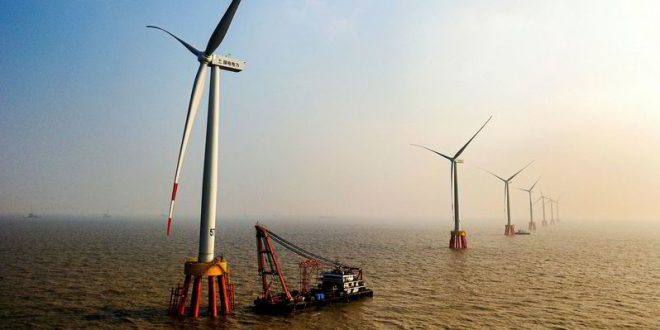According to market research firm, Frost & Sullivan, increasing demand for energy worldwide and traditional energy independence due to volatile oil prices is encouraging governments throughout the world to harness the potential of renewable energy, driving the global market for wind turbine materials. Expanding at a compound annual growth rate (CAGR) of 8.9%, the wind turbine materials market is likely to almost double, reaching $19.57 billion by 2026 from $10.76 billion in 2019.”With the increasing population and economic development, global energy demand is rising rapidly. Many countries across the globe have been experiencing an energy gap, which is being broadened by the deliberate depletion of fossil fuels,” said Sayantan Sengupta, visionary science research analyst at Frost & Sullivan. “These factors urgently call for transforming the world’s traditional energy system with excessive uptake of energy-efficient renewables. In turn, this is expected to enhance the investments in the renewable energy sector, such as wind power, thereby driving the demand for both structural and non-structural materials.”
Frost & Sullivan’s recent analysis, Global Wind Turbine Materials Market, Forecast to 2026, covers global market trends, including market drivers and restraints, regional technology trends, and key market participants. APAC, divided into India and the Rest of APAC, will continue to lead the market for both structural and non-structural materials due to the rapid development of the region’s wind energy sector. The Middle East and Rest of the World (ROW comprises countries in Africa, Latin America, and others, including Russia and Turkey) are expected to be the two fastest-growing wind turbine materials markets, with increasing government spending and favorable policy targets for wind energy deployment in these regions.
“Due to the complexity of the production process and application areas, brand equity, global presence, manufacturing expertise, and supply reliability, long-term relationships with OEMs are extremely critical in the wind turbine materials market,” noted Sengupta. “Further, with the increasing greenhouse gas emissions, government authorities worldwide are expected to focus on offshore wind energy installations, which are still at a nascent stage in most parts of the world. This is expected to strengthen the demand for high-performance specialized materials.”
Uncertain government policies and inconsistent incentives and tariff rates along with the scarcity of infrastructure for wind energy transmission are likely to restrain the growth of the wind turbine materials market. However, original equipment manufacturers’ (OEMs’) focus on innovation and product enhancement within existing material chemistries is expected to unlock tremendous growth opportunities.
Global Wind Turbine Materials Market, Forecast to 2026 is the latest addition to Frost & Sullivan’s Visionary Science research and analysis available through the Frost & Sullivan Leadership Council, which helps organizations identify a continuous flow of growth opportunities to succeed in an unpredictable future.

 Iran Energy News Oil, Gas, Petrochemical and Energy Field Specialized Channel
Iran Energy News Oil, Gas, Petrochemical and Energy Field Specialized Channel



